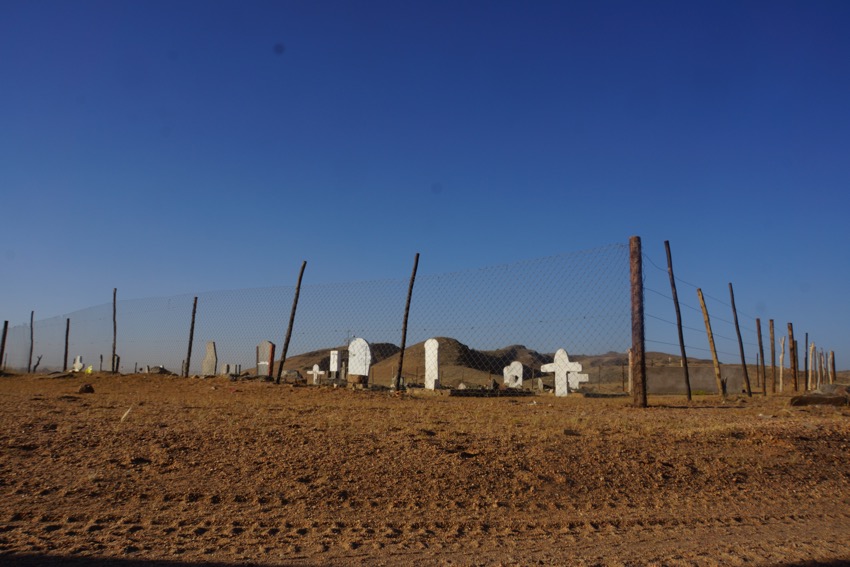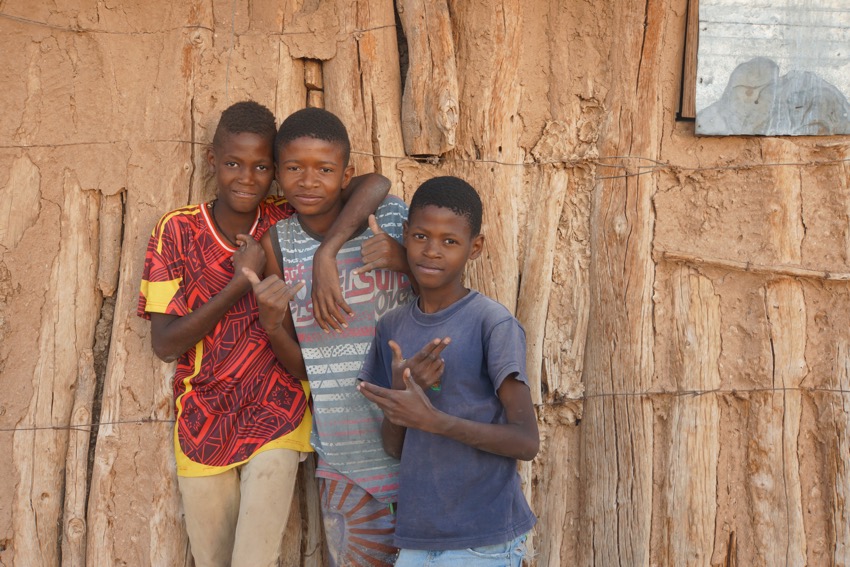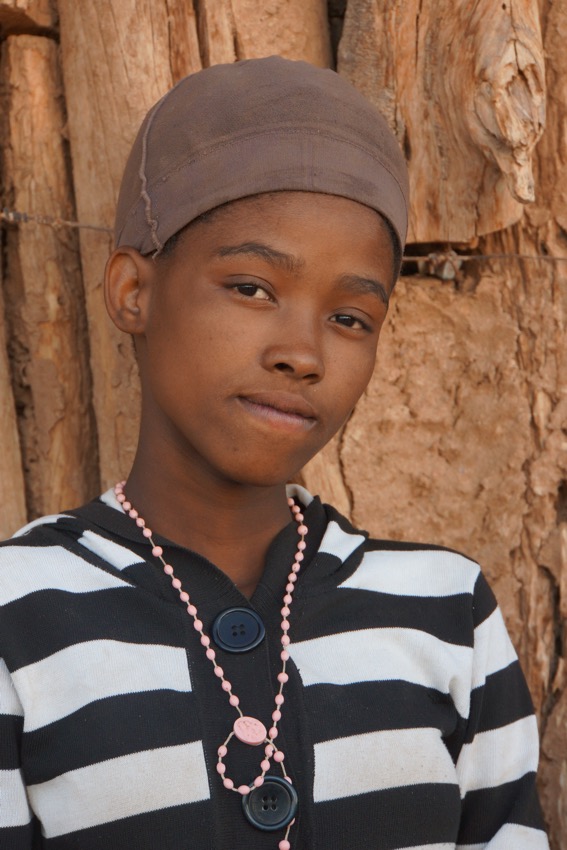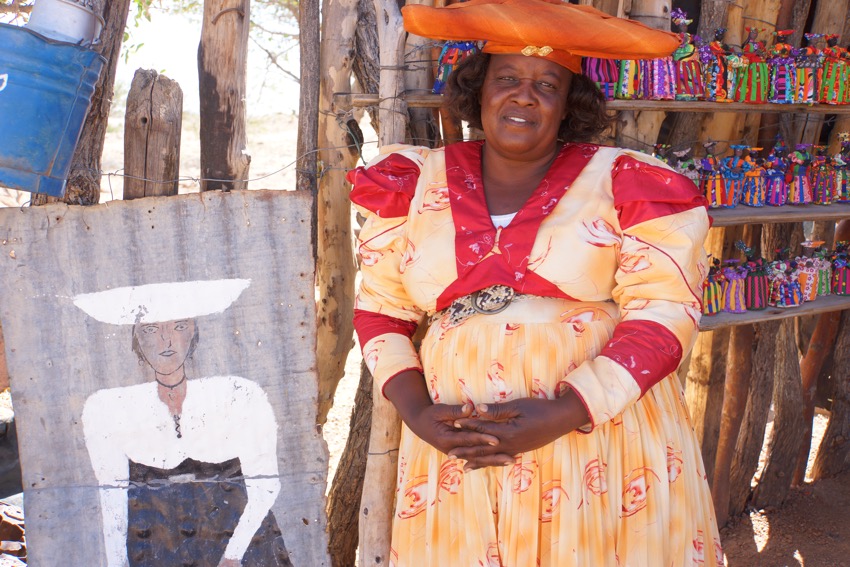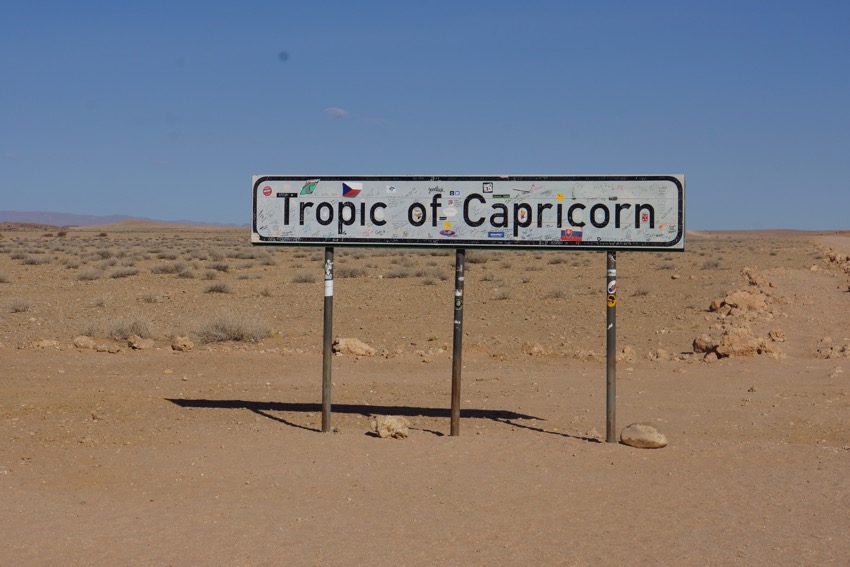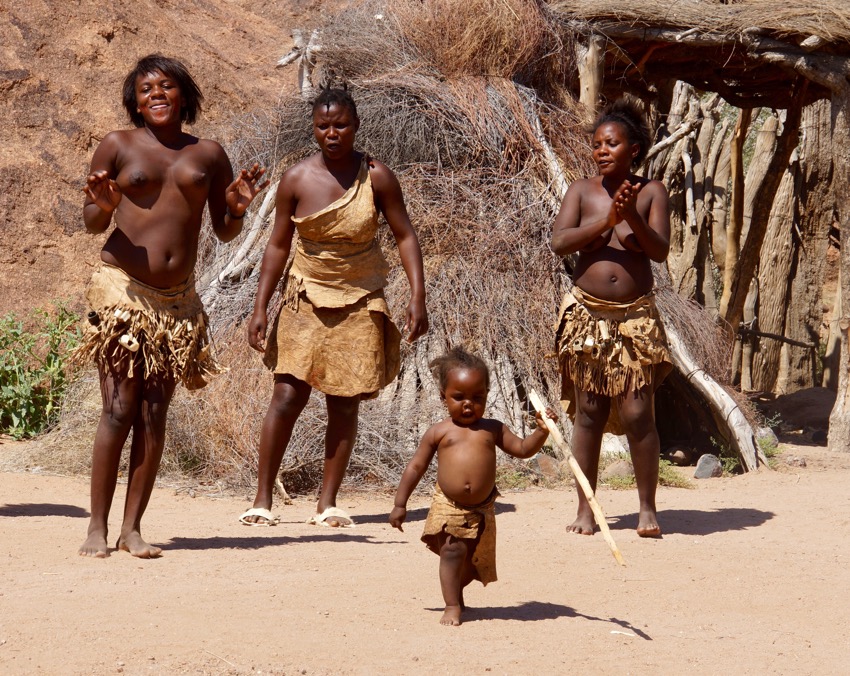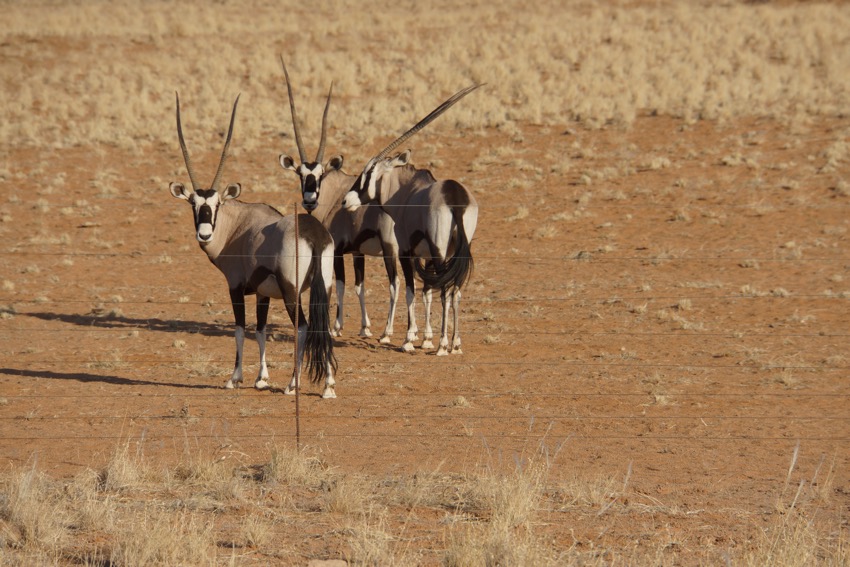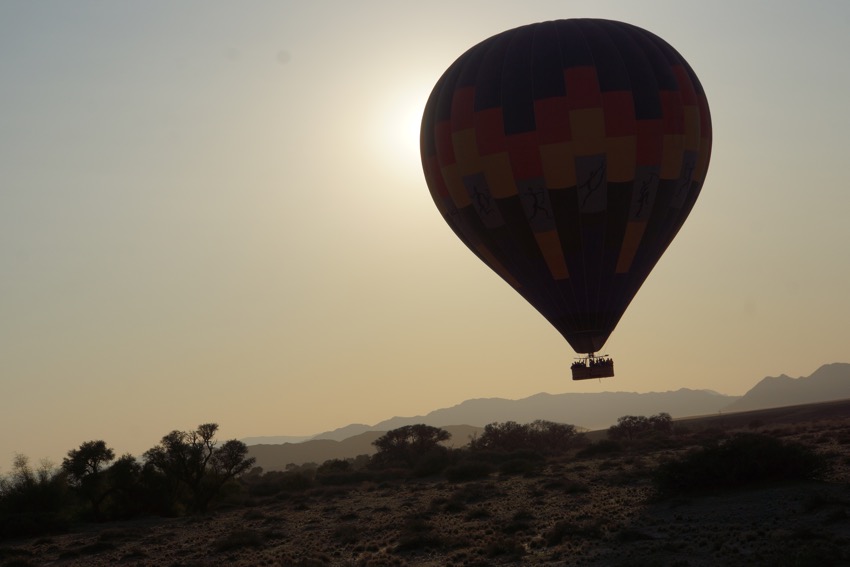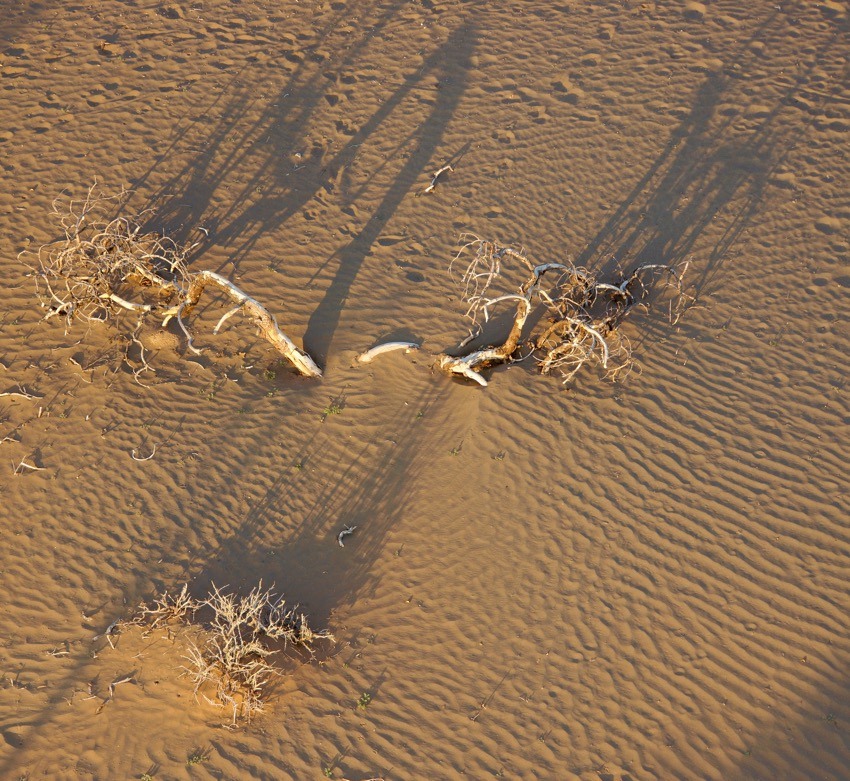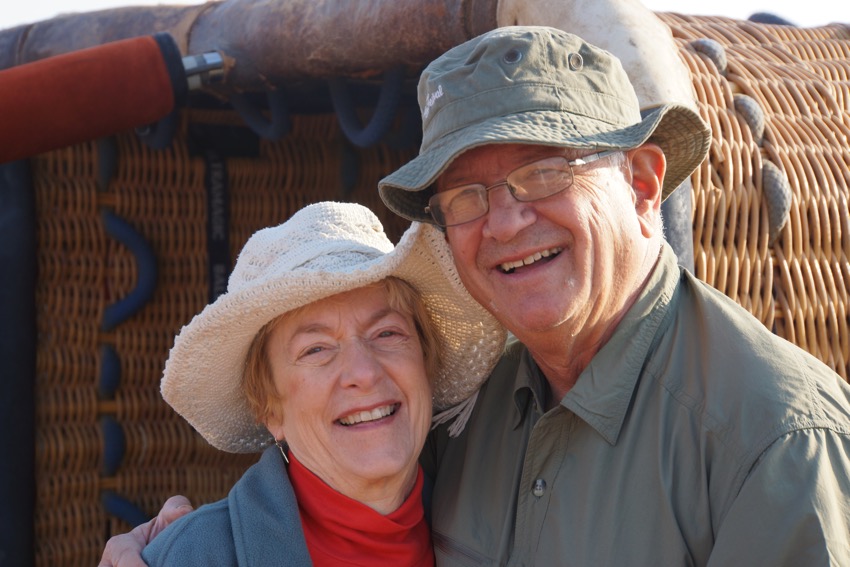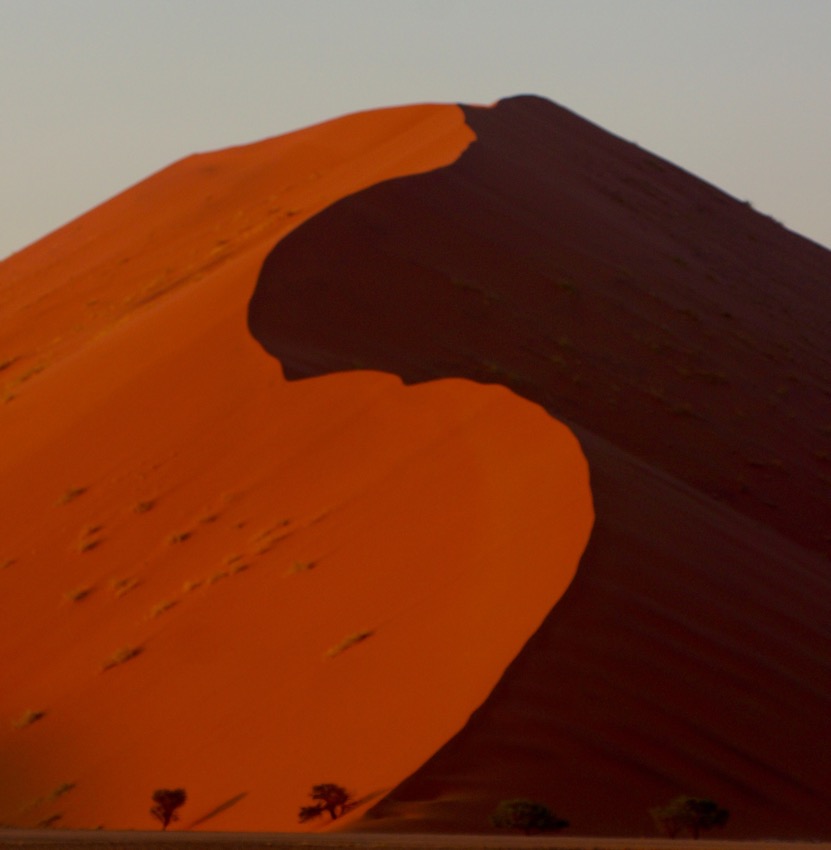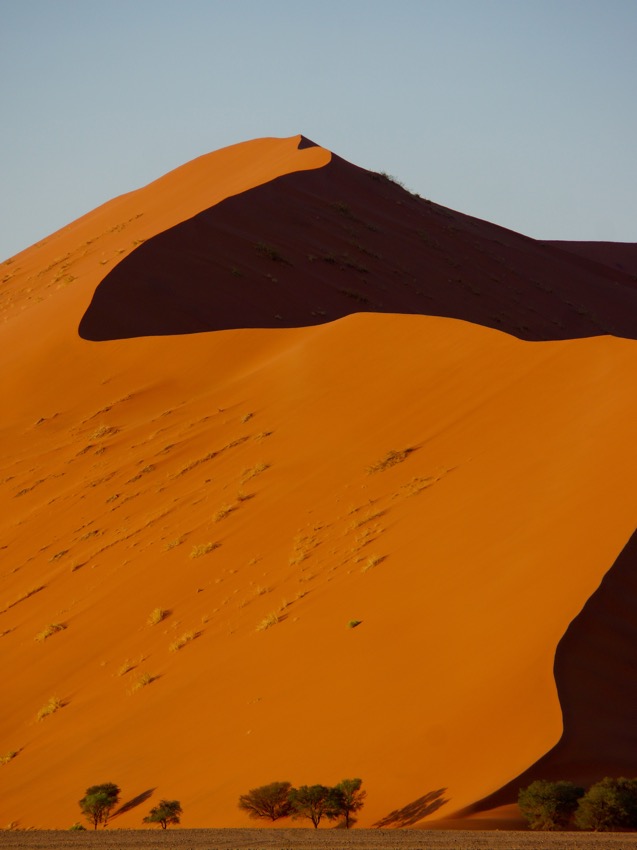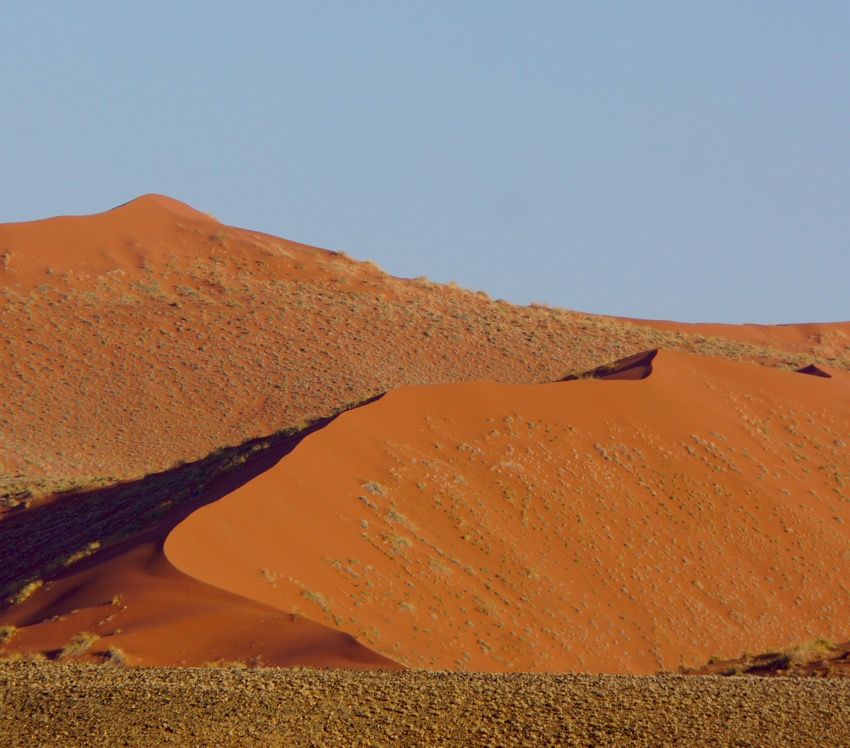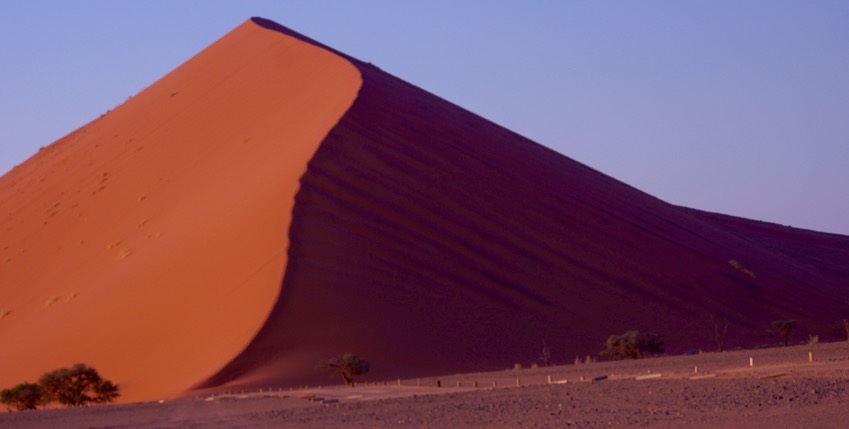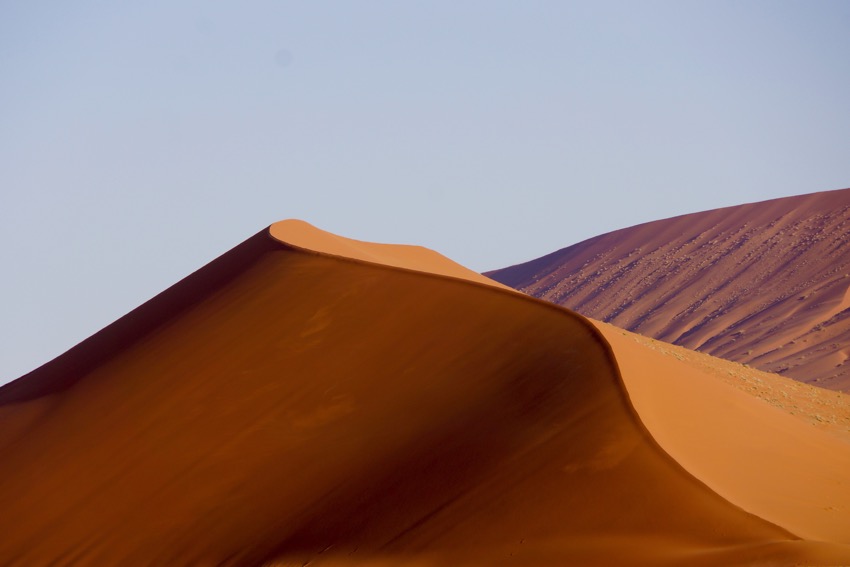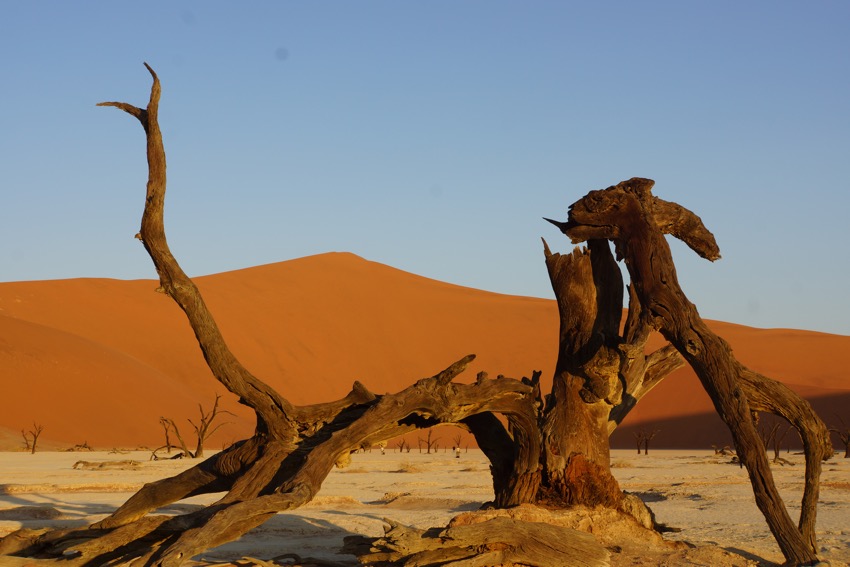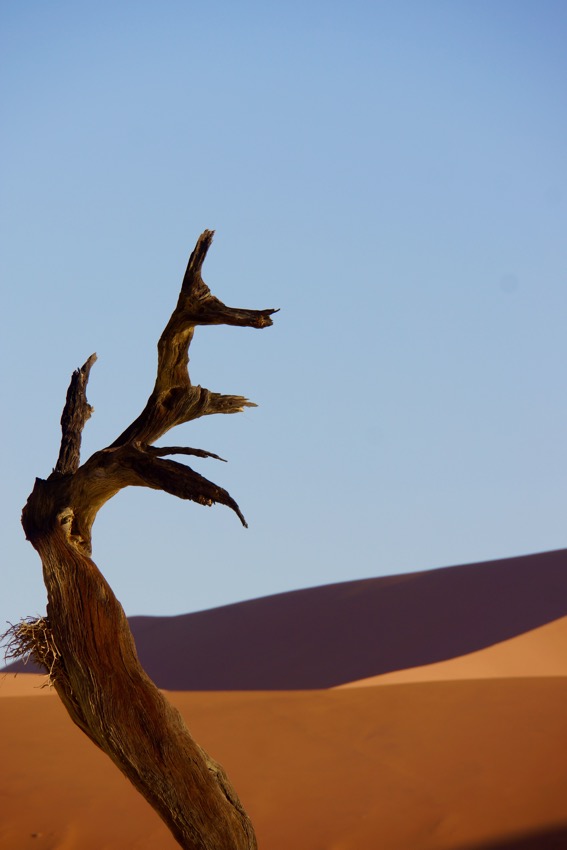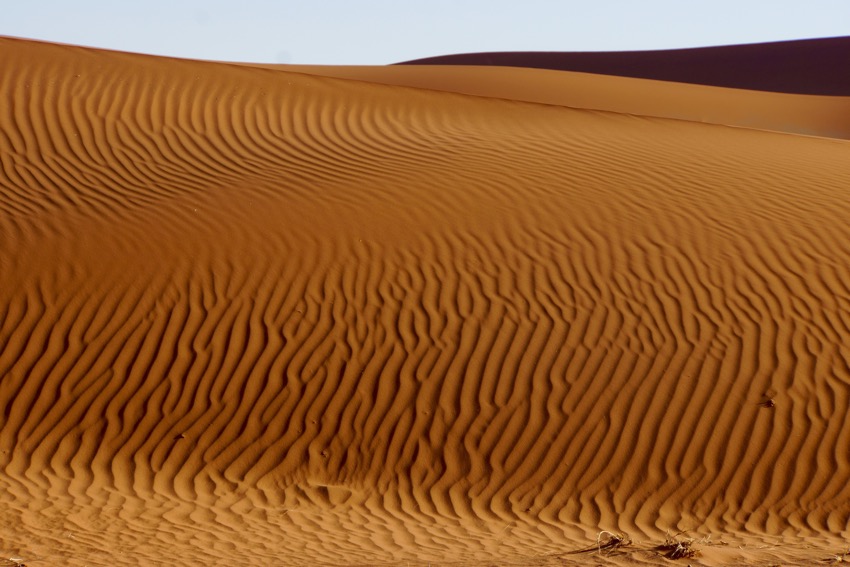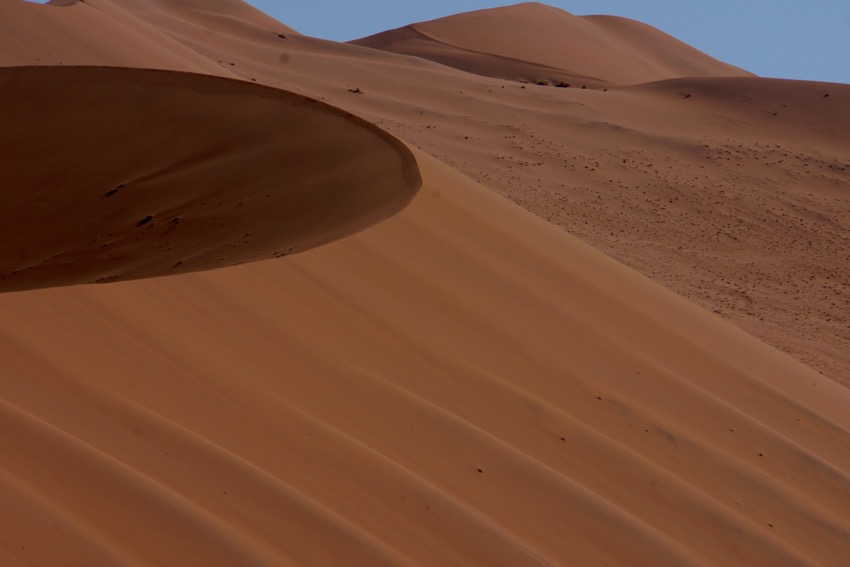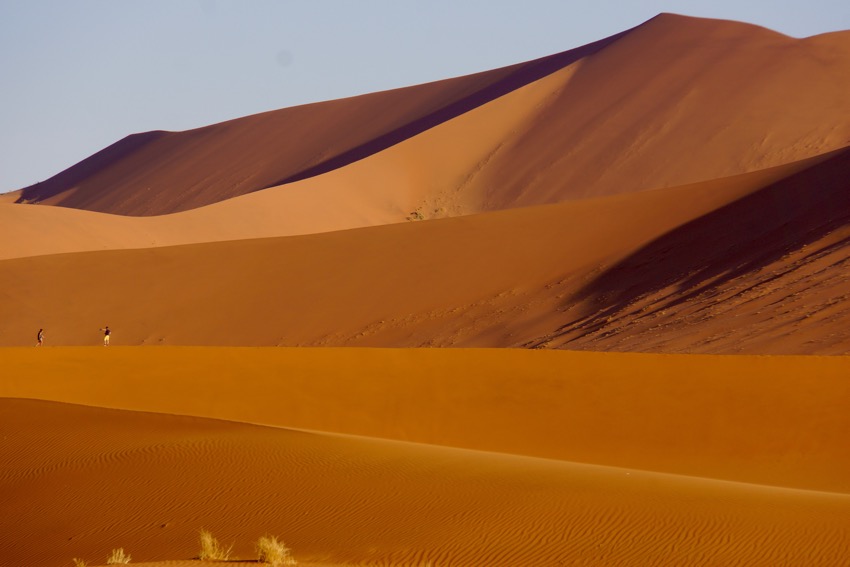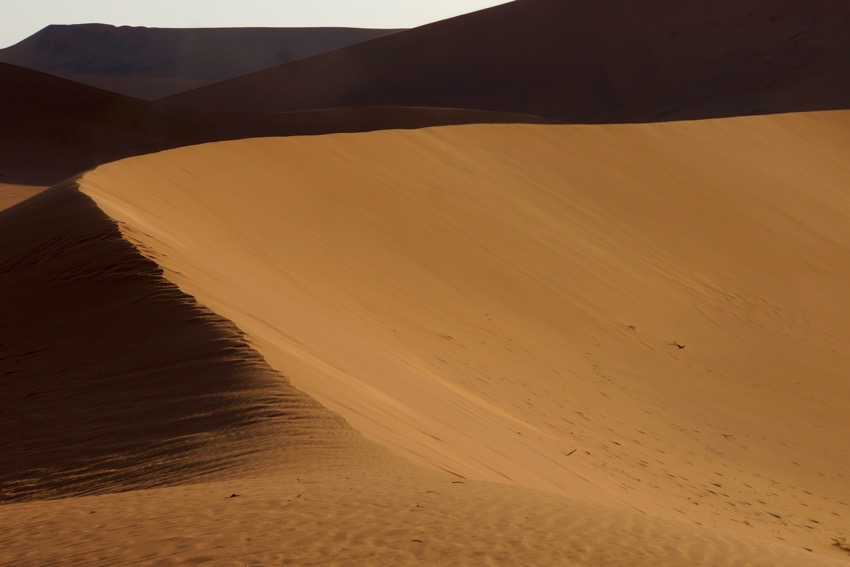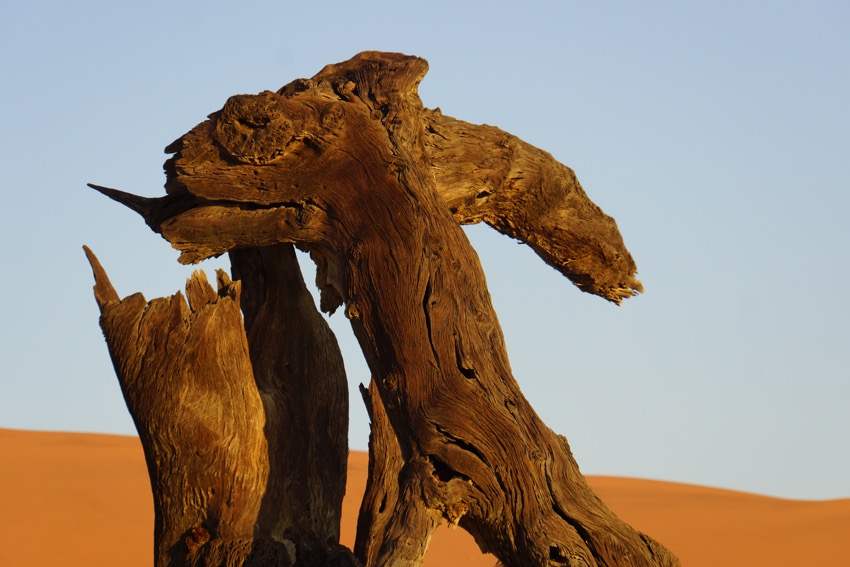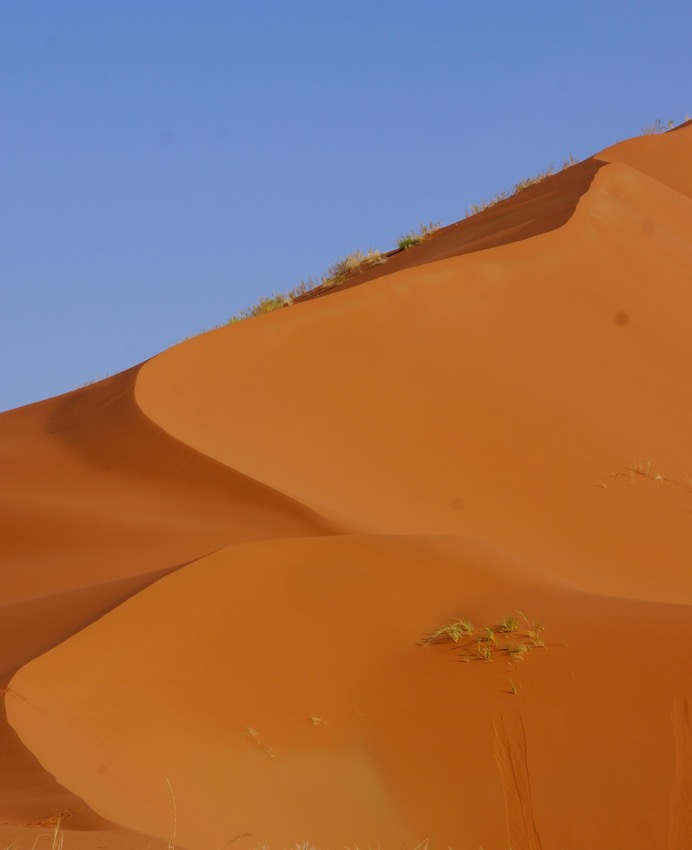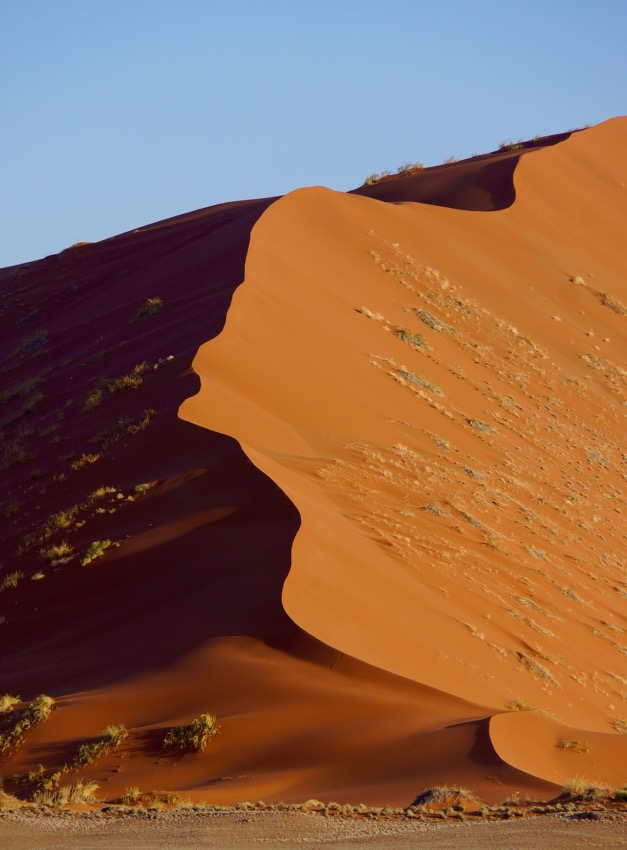May 3. We return for a final time to see the dunes at sunrise. They continue to amaze, appearing to have been sculpted expertly to change shape and color with the shifting light and the angle from which you view them. We leave them behind, satisfied that we have not “overdune” them.
Return to the lodge to pack and have breakfast. The Sossus Dune Lodge was another very good place to stay, comfortable and beautifully situated to afford great views while blending with the environment. This would be my second favorite, with the Elephant lodge (in some ways the ritziest) third and Mowani Mountain Camp the clear winner.
Today is spent driving back to Winhoek, with stops for a marvelous apple crumble at Solitaire Bakery and a quick sandwich along the road. I have two sessions with Nevada, reviewing photos on the bus, which are very helpful in identifying problems with my photos and somewhat encouraging, because I’ve improved pretty significantly based on incorporating suggestions from our earlier session together. We arrive at 3:00 and have a welcome and luxurious 3 1/2 hour break before drinks. We are back “home” at Galton House, where we started the journey and are even assigned the same rooms. It’s been a tiring trip with very early wake ups, temperatures of over 100 degrees in the sun during midday, long rides in the van and some fairly challenging walking, sometimes in high winds. So the afternoon respite is very welcome.
We meet for drinks at 6:30, and Carol reads drafts of a couple poems she’s written about the dunes and I read the spoof blog I’ve written about what really happened on our trip. Both are well received. We drive to a local restaurant with a lot of character and have an excellent meal.
Carol and Jeff will be leaving the group tomorrow to fly home, as they are not doing the five day extension. The rest of us will be heading north. I’m told that we won’t have internet for three or four days,
|
|||
|
May 2. Another very early start for a 5 o’clock takeoff for our balloon ride. Six of the group elect to take this optional, but not inexpensive ($450 each) one-hour ride. We get to the site and one of the pilots tell us that, because of the wind, there’s only a 50-50 chance we’ll be able to fly. We’ll have to wait until sunrise to see whether the winds calm down.
May 1. We arise very early and depart by 5 AM for an excursion in the Namib Naukluft National Park to photograph the dunes while the light is soft and the shadows accentuate their towering shapes and curves. We drive about an hour to a spot Terry likes and hike a ways into the park and climb a dune as the sun rises. There is a very strong wind, which creates something of a sandstorm, making walking a challenge. We spend an hour photographing the dunes from different spots and angles. Happily, the winds have died down, and the photographs we take from the road en route to breakfast are probably better than those taken on the dunes. After a short drive we stop and enjoy a very tasty picnic breakfast prepared by our guides under the shade of a camel thorn tree.
Sand-locked pans to the west show where the river previously flowed to before dunes shifted its endpoint to where it currently gathers at Sossusvlei. Roughly once a decade rainfall over the catchment area is sufficient to bring the river down in flood and fill the pan. On such occasions the mirror images of dunes and camel thorn trees around the pan are reflected in the water. Sossusvlei is the biggest of four pans in the vicinity.
April 30. After breakfast at the hotel, we drive a short distance from Swakopmund to visit two poor townships nearby, Mondesa and DRC. They are a stark contrast to the prosperous city we spent the night in. Again, Nevada delivers photos she has taken last year to the people, including Agnes of Agnes Barber Shop (hair parlour). People are friendly and, except for one guy, willing to be photographed. This is a side of Swakopmund that visitors would not normally see, just as visitors to a US city would not see its poorer areas Around 6PM, we arrived at our hotel, the Sossus Dune Lodge, which is situated inside the Namib Naukluft National Park, and gives us great access to the stunning giant sand dunes of the Namib Desert. The Lodge is ideally located with dramatic views out over the surrounding desert landscapes; its unique location allows us early entry into the dunes at Sossusvlei an hour before sunrise and a late exit an hour after sunset. The Lodge has been constructed on stilts linked by wooden walkways, thus creating the least amount of impact on the fragile desert environment. Accommodation is in very comfortable en-suite wooden and canvas chalets that lead on to a private wooden veranda overlooking the expansive desert plains. There is a large main area consisting of a dining room, a swimming pool, and a pleasant bar. |
|||
|
Copyright © 2025 Dual Arts Press - All Rights Reserved Powered by WordPress & Atahualpa |
|||
